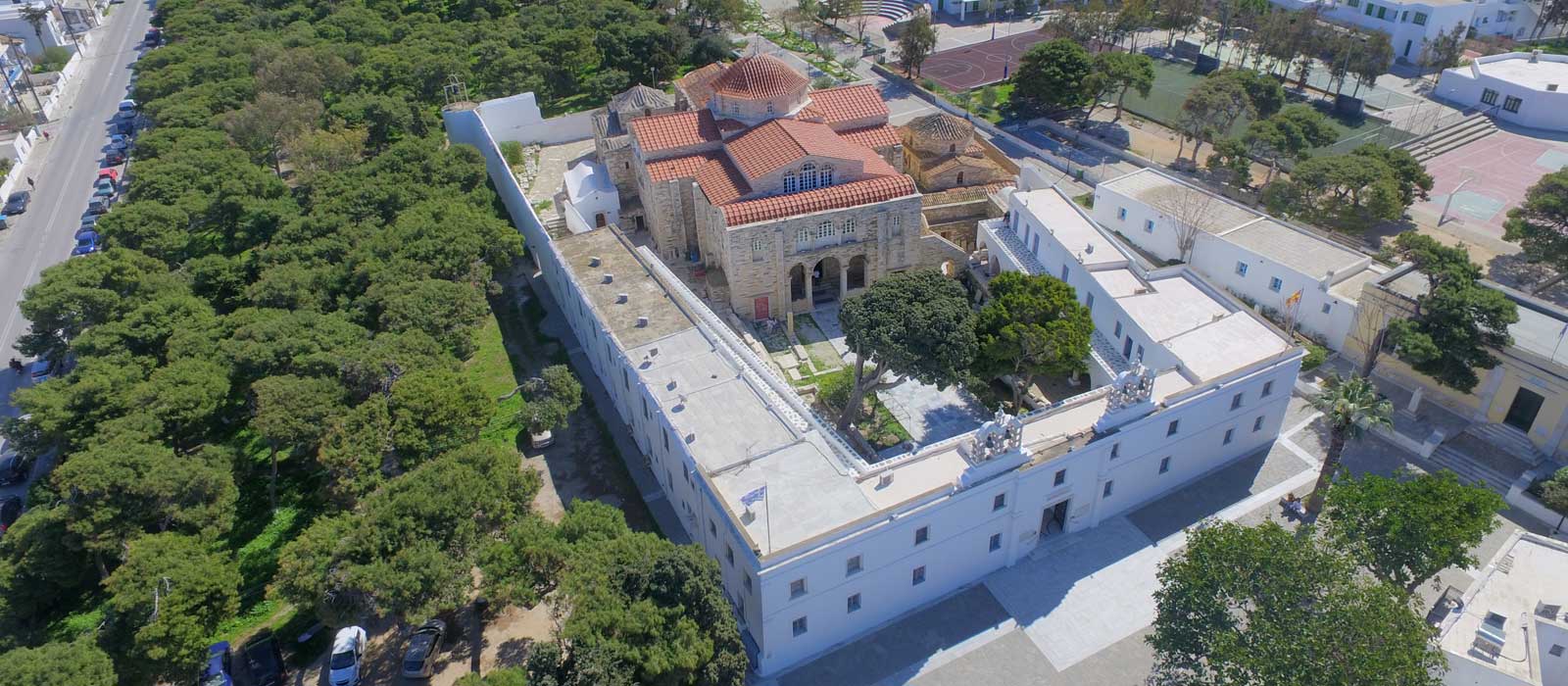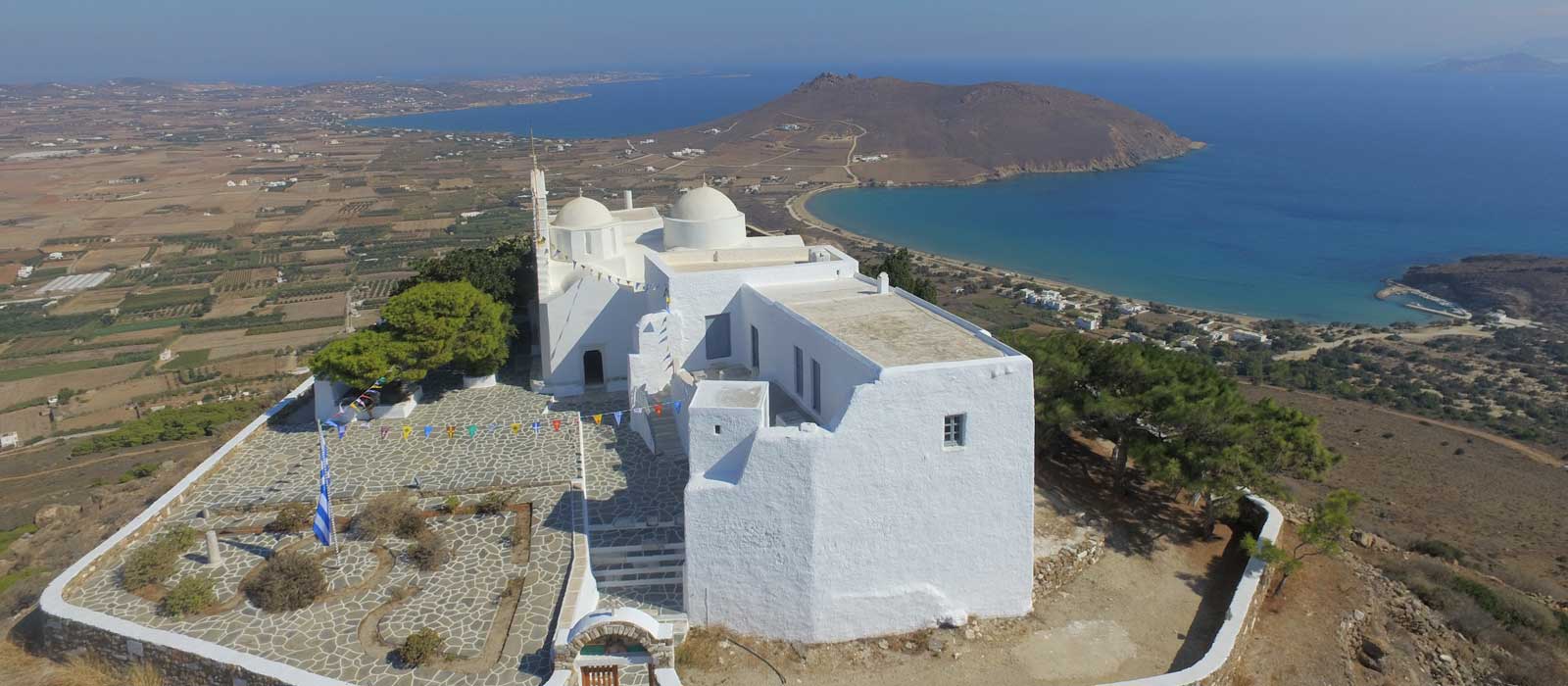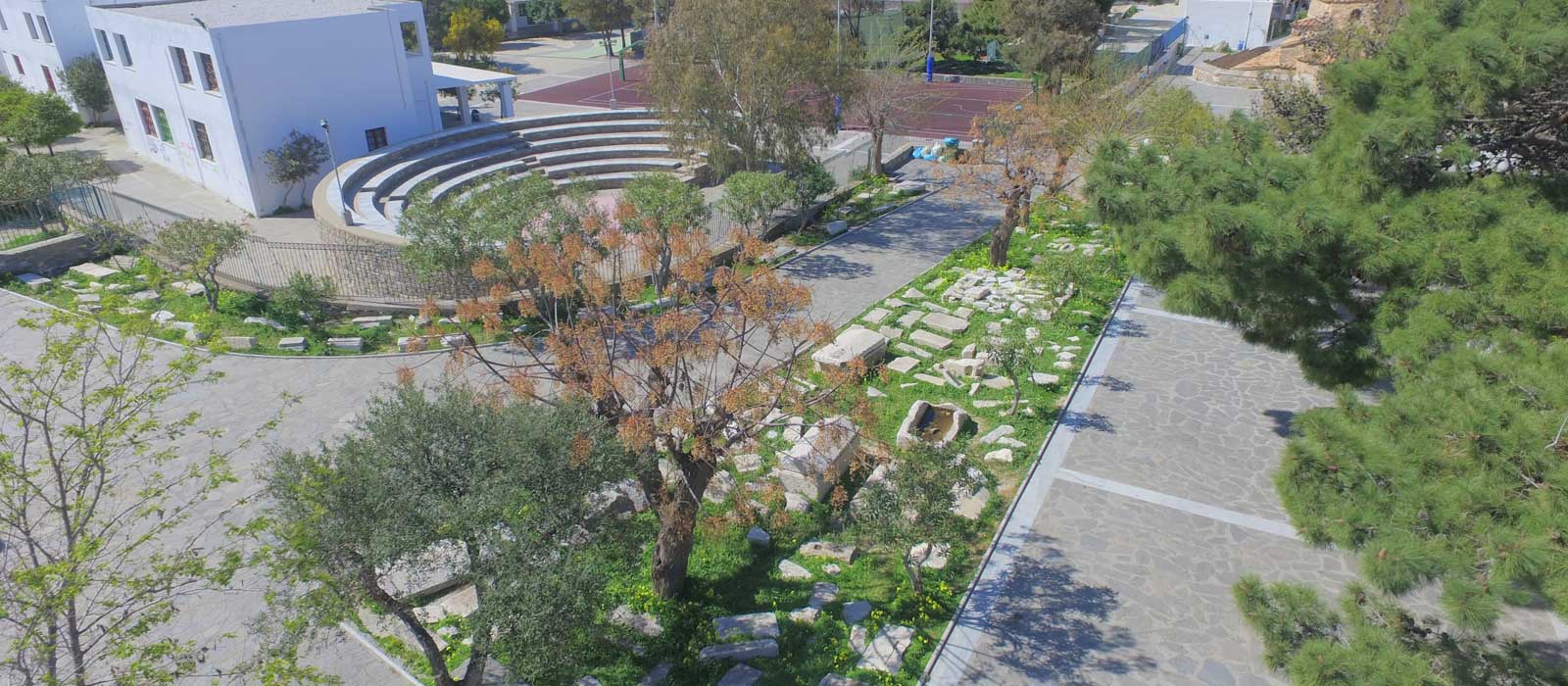Panagia Ekatontapyliani is the jewel of Paros also known as the Church of one hundred gates. It is a historic Byzantine church located in the town of Parikia. The complex includes a central church surrounded by two smaller churches, as well as a baptistery on the east side with an inscription on the rare cruciform, marble baptismal tub.
The church dates from 326 AD. According to the sources it was founded by Saint Helen, the mother of the Roman emperor Constantine the Great (reigned 306-337 AD), during her pilgrimage to the Holy Land, when she stopped on the island to pray at a local chapel.
Ekatontapyliani is known for the pilgrimages that take place there in honour of Panagia, the Holy Virgin. It is the second largest pilgrimage destination in the Aegean, after the famous Panagia Megalohari on the nearby island of Tinos. Inside the main church you can see the two remaining columns from the temple of Artemis/Diana on which Ekatontapiliani was built.
Panagia Ekatontapyliani is the most important attraction on the island of Paros.





